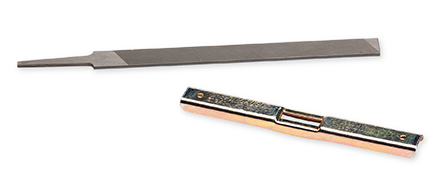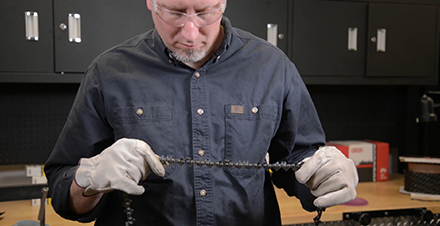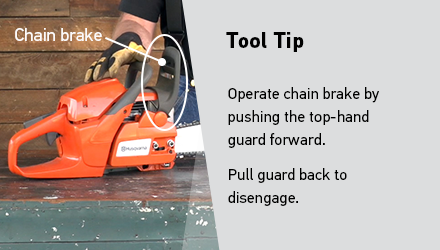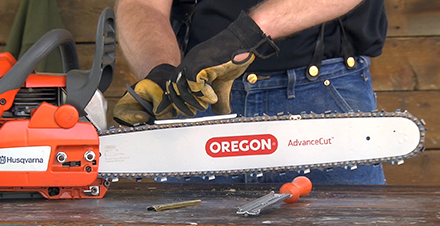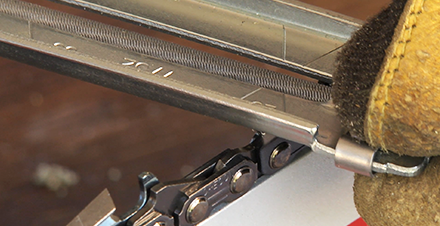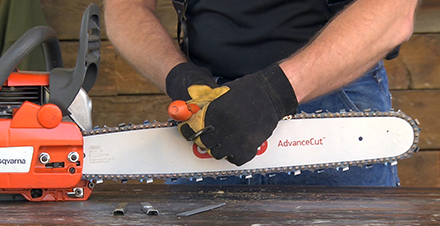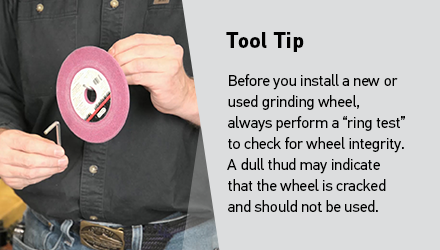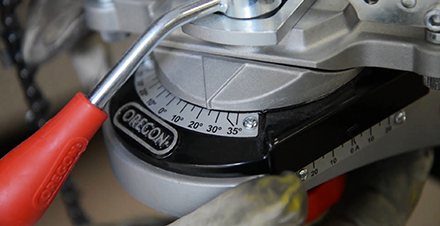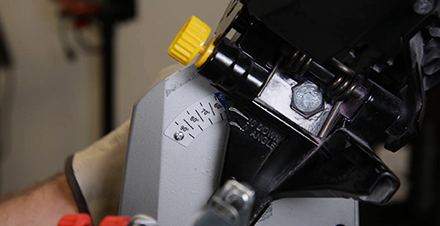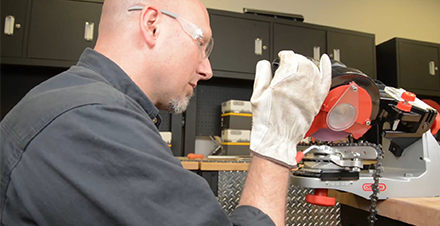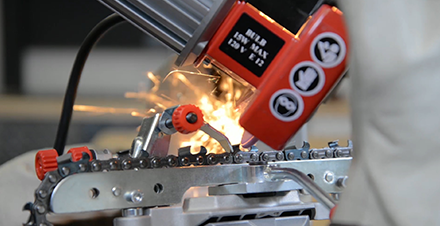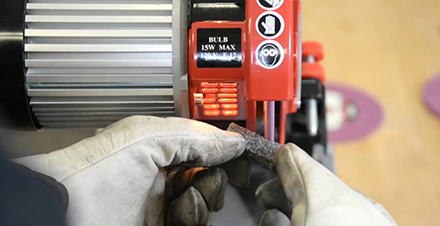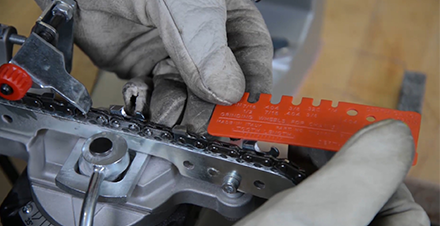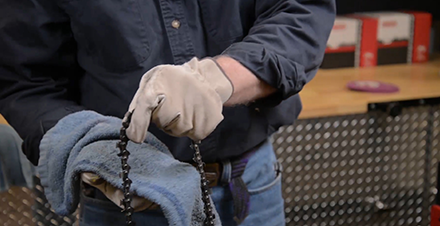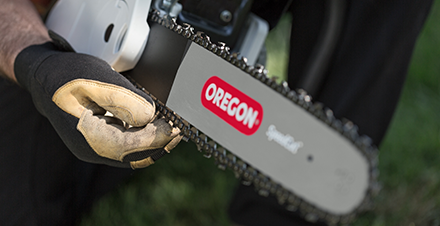How-to Sharpen a Chainsaw Chain
Overview
It is important to keep your chain sharp, since dull chain increases the chainsaw bar launching upward after chain gets caught in the wood. This occurrence is commonly known as kickback and it is one of the most common causes of chainsaw injury. Increased fuel consumption and excessive damage are two more reasons to avoid cutting with a dull chain. Read on to learn the basics of sharpening your chain with a file or electric grinder, and check out our support videos. There are two main methods you can use for sharpening chainsaw chain by hand with using a round chainsaw file or an electric chainsaw grinder. A third method, square filing, is only meant for square chain used to cut large trees. These instructions are meant to be general guidelines. Refer to your grinder manual for set-up use and instructions. Grind your chain so that it meets the recommendations of the manufacturer. Use a quick tapping motion to minimize overheating of the ground surface.
Topics
Chain Anatomy - Parts of Cutter
Step by Step: What You Should Do Before Sharpening a Chainsaw Chain
Step by Step: How to Sharpen with a Round File
Step by Step: How to Sharpen a Chainsaw Chain with an Oregon Electric Sharpener
Step by Step: What You Should Do After Sharpening a Chainsaw

